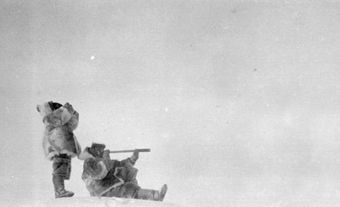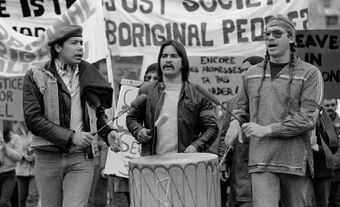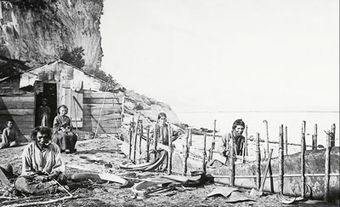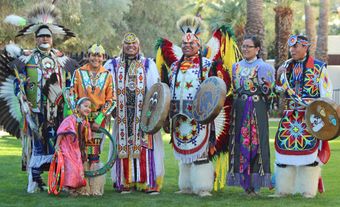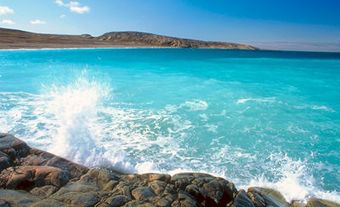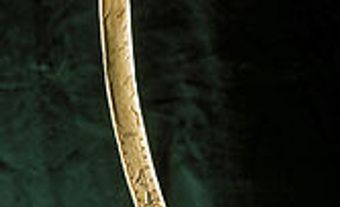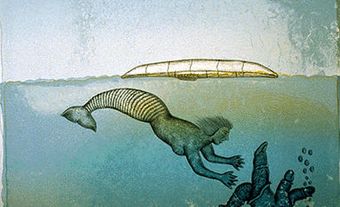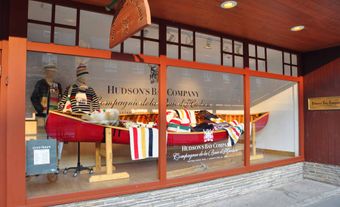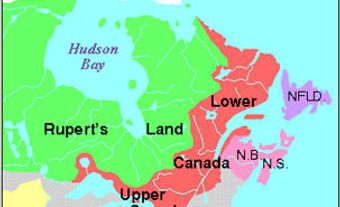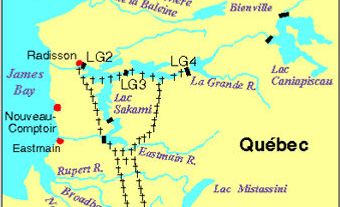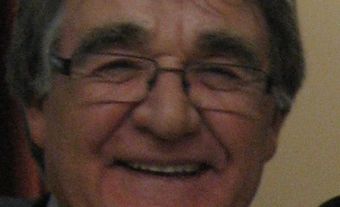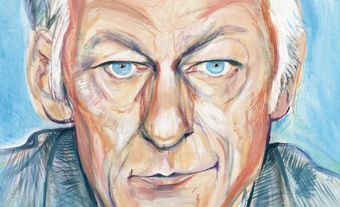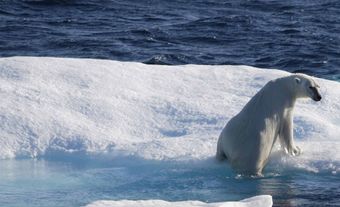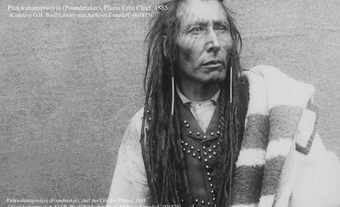Nunavik, the portion of land within the province of Quebec located north of the 55th parallel, covers approximately 500,000 km2 (representing more than one-third of Quebec’s territory). For approximately 4,000 years, Indigenous people have inhabited Nunavik, including Inuit who have made the region their homeland. Today, over 13,000 people live in Nunavik’s 14 villages spread along the Ungava Bay, Hudson Strait and Eastern Hudson Bay coasts.

History
For more than 4,000 years, people such as the ancient Thule and Inuit have lived a nomadic life above the 55th parallel in what is now known as the province of Quebec. About 400 years ago, European explorers, whalers, fur traders and missionaries started having contact with the region’s Inuit.
In 1670, all the land in the Hudson Bay watershed was granted to the Hudson’s Bay Company in the name of the English Crown. This land, known as Rupert’s Land, was transferred to the Dominion of Canada shortly after Confederation. In 1912, through the Quebec Boundaries Extension Act, the Canadian government ceded the whole district of Ungava to the province of Quebec. All of these land changeovers happened without the Inuit’s awareness or consent. Actually, the Inuit only realized they were part of Quebec in 1963 when René Lévesque, then minister of natural resources, set up La Direction Générale du Nouveau-Québec (New Quebec Branch) to control and develop the northern territory.
From the 1940s to the 1960s, the creation of administrative structures, the implementation of governmental services such as education, health and social assistance, the establishment of military installations, and the development of mining and hydroelectric projects forced the Inuit to settle in permanent communities. Through the late 1960s, Inuit of Nunavik didn’t have their own voice in Quebec City or Ottawa. The Anglican bishop often acted as their political spokesperson.
Land Claims
In 1971, without consulting the Inuit and Cree, the Quebec government announced a major hydroelectric development project, the James Bay Project. In response, 27-year-old Charlie Watt immediately assembled a group of Inuit to create the Northern Quebec Inuit Association (NQIA). The Inuit joined forces with the Cree and applied to the Quebec Superior Court (see Court System of Canada) for an injunction to stop the project. The ruling went in their favour but was quickly overturned by an appeals court. The following two years of negotiations (1973-75) led to an out-of-court agreement, the James Bay and Northern Quebec Agreement (JBNQA), signed in Quebec City on 11 November 1975. It was considered the first modern Indigenous land claims settlement in Canada.
In the JBNQA, the James Bay Cree and Inuit of northern Quebec ceded territory totalling 450,000km2 and received $225 million in compensation, as well as property rights on 1.4 per cent of the territory (category I land) and exclusive or preferential hunting, fishing and trapping rights on the rest. In 1978, in a supplementary convention, the Northeastern Quebec Agreement (NEQA), the Naskapis peoples were awarded $9 million from Quebec and the federal government.
Although three communities refused to sign the agreement, Puvirnituq, Ivujivik and Salluit, Nunavimmiut (Inuit from Nunavik) ratified the JBNQA with 63 per cent support.
This agreement led to the creation of the first Inuit-managed organizations in Nunavik:
- Kativik Regional Government (KRG) has administrative jurisdiction over the Nunavik territory. The sectors in which KRG delivers services include airport management, marine infrastructure maintenance, regional and local economic development, business development, policing and civil security, wildlife conservation, environmental and climate change research, park development and management, childcare, and municipal infrastructure. KRG is Nunavik’s largest employer.
- Kativik School Board (KSB)
- Nunavik Regional Board of Health and Social Services (NRBHSS)
- Makivik Corporation, a non-profit organization. Its mandate is to protect the integrity of the JBNQA, manage the compensation funds, and focus on the political, social and economic development of Nunavik.
Thirty-one years after the signing of the JBNQA, on 1 December 2006, in Kuujjuaq, Makivik, the Government of Canada and the Government of Nunavut signed the Nunavik Inuit Land Claims Agreement (NILCA). The NILCA gave Nunavik Inuit ownership, either solely or jointly, to a total of 7,530 islands, which represent 80 per cent of all the islands in the Nunavik Marine Region. This ownership included both surface and subsurface rights.

The Land
Nunavik covers approximately 500,000 km2 of land, representing more than one-third of Quebec’s territory or the size of Spain.
There are no roads linking the region’s 14 villages or connecting Nunavik to southern Quebec. Communities depend on air transportation year-round.
Nunavik has four national parks:
- Pingualuit. Established in 2007. Located in the centre of the Ungava plateau to protect a meteoritic crater;
- Kuururjuaq. Opened in 2009. Covers 4460 km2 from Ungava Bay all the way to the peak of Mont D’Iberville in the Torngat Mountains;
- Tursujuq. Created in 2013. Spans 26,107 km2 near the shores of Hudson Bay;
- Ulittaniujalik. Created in 2016. The second-largest national park in Quebec.

The People
As per the 2016 census, there are 13,188 people living in Nunavik’s 14 villages. Kuujjuaq is the largest community and the administrative centre. Inuktitut is the mother tongue of 87 per cent of the population and 62 per cent of Nunavimmiut (Inuit from Nunavik) are under the age of 30. Anglican is the predominant religion.
|
Community |
Meaning of name |
Population |
|
Akulivik |
Central prong of a kakivak (a traditional trident-shaped fishing spear) |
633 |
|
Aupaluk |
Where the earth is red |
209 |
|
Inukjuak |
The giant |
1,757 |
|
Ivujivik |
Place where ice accumulates because of strong currents |
414 |
|
Very large bay |
942 |
|
|
Kangiqsujuaq |
The large bay |
750 |
|
Kangirsuk |
The bay |
567 |
|
Kuujjuaq |
Great river |
2,754 |
|
Kuujjuarapik / Whapmagoostui / Poste-de-la-Baleine |
Little great river |
686 |
|
Puvirnituq |
Place where there is a smell of rotten meat |
1,779 |
|
Quaqtaq |
Tapeworm |
403 |
|
Salluit |
The thin ones |
1,483 |
|
Tasiujaq |
Which resembles a lake |
369 |
|
Umiujaq |
Which resembles a boat |
442 |
Culture
For millennia, the Inuit culture was orally passed down to the next generation. Because of drastic changes in the Inuit way of life in the 20th century, the Avataq Cultural Institute was created in 1980. Its mission is to ensure that Nunavik’s culture and language continue to thrive, so that future generations benefit from their ancestors’ rich heritage. Avataq acts as Nunavik’s official archival centre and offers various programs and services such as Inuktitut promotion and preservation, documentation of genealogical family trees, establishment and operation of a network of museums and cultural transmission centres, conservation of a collection of Inuit artwork, archaeological research, and traditional skills courses.
Steps Towards Self-Government
In order to resolve the disagreements created by the James Bay and Northern Quebec Agreement (JBNQA) and to reconnect with the visions of autonomy promoted by the Inuit co-operatives, Nunavimmiut (Inuit from Nunavik) have been slowly and steadily moving towards self-government.
Their first action was to set up the Northern Quebec group on self-government, called Ujjituijiit. Consultations were held in all 14 Inuit communities and a constitutional proposal was approved by referendum in 1991.
In the early 1990s, attempts to negotiate some form of self-government were delayed by the political climate of Quebec. Negotiations with the province and the Government of Canada officially began in 2002.
On 5 December 2007, in Quebec City, the Nunavik Government Agreement in principle (NGAP) was signed to formally create a new regional government in Nunavik. This new regional government will not be ethnic based but will represent all citizens of Nunavik.
Through the 2018 Nunavik Inuit Declaration, Makivik was given the mandate to establish an Indigenous Government. In February 2019, it was asked to set up a Nunavik Constitutional Task Force to develop a Nunavik Constitution. Then, on 18 June 2019, Makivik’s President Charlie Watt and Carolyn Bennett, Minister of Crown-Indigenous Relations and Northern Affairs (CIRNA) signed a Memorandum of Understanding on Self-Determination.
On that day, Charlie Watt declared that “This is an important day for Nunavik Inuit. This launches a formal process which recognizes the right of Nunavik Inuit to establish a new governance structure based on our laws, values, identity, culture and language. To prosper and thrive in our homeland requires that the inequities of the past be recognized and addressed. This is our time.”

 Share on Facebook
Share on Facebook Share on X
Share on X Share by Email
Share by Email Share on Google Classroom
Share on Google Classroom
